An Original Stone Eagle Comes Home to Penn Station in NYC
A 7,500-pound eagle sculpture from the top of the original 1910 Penn Station building has been returned after years in hiding!


The Upper East Side is often associated with wealth and art, featuring some of the city’s most expensive residences and most famed museums. The Upper East Side houses many former mansions and estates, as well as dozens of museums and cultural centers, including the Metropolitan Museum of Art, the Guggenheim Museum, and the Neue Galerie. The neighborhood, though, has many secrets beyond just extravagant apartments and world-renowned museums: In fact, Robert Moses actually despised a few structures in the neighborhood, and there are a number of under-the-radar societies and clubs. Here’s our guide to the top 11 secrets of the Upper East Side.
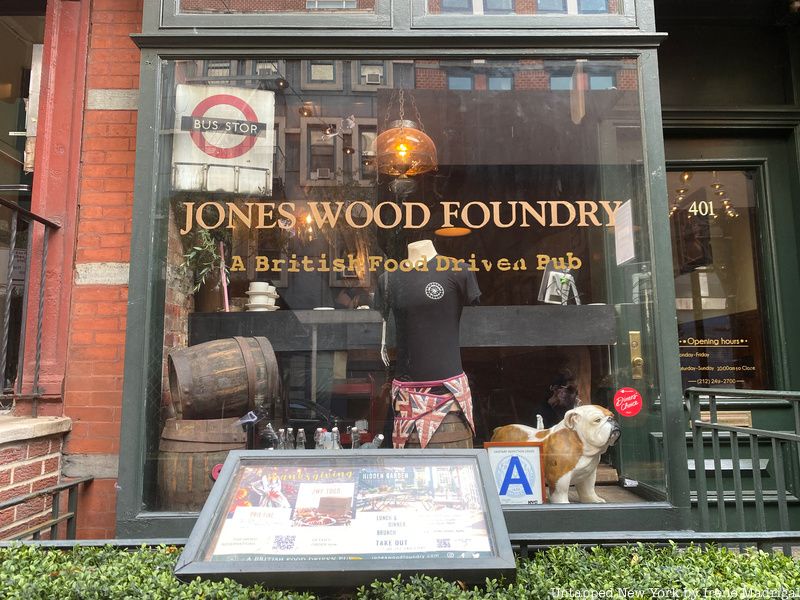
In present-day Lenox Hill, Jones’s Wood was a plot of farmland overlooking the East River formerly owned by the Jones and Schermerhorn families. The 132-acre property, known as the “Louvre Farm,” extended from 66th Street to 75th Street. The successful innkeeper and merchant John Jones bought the property, which was divided into lots and given to his children. His son James maintained the property, and his daughter Sarah lived with her husband Peter Schermerhorn, a shipowner and merchant. Peter purchased the adjoining property, while the home survived until as late as 1911.
Before concrete plans for Central Park were drawn out, many landscape architects and urban planners considered building a public park at the site of Jones’s Wood. The New York Tribune and New York Post featured numerous editorials outlining the perks of the farmland, which according to one article would “form a kind of Hyde Park for New York.” A bill was unanimously passed that would authorize the city to appropriate the land through eminent domain, but the law was later invalidated. Many people thought the park was too hard to access, and plans for Central Park proved more popular since building the park would require the destruction of Seneca Village, which many felt needed to be redeveloped. The Schermerhorns and Jones continued their fight to stop the city from taking their property, and eventually, a hotel was erected on the property which attracted working-class New Yorkers. Part of Jones’s Wood is now occupied by Rockefeller University.
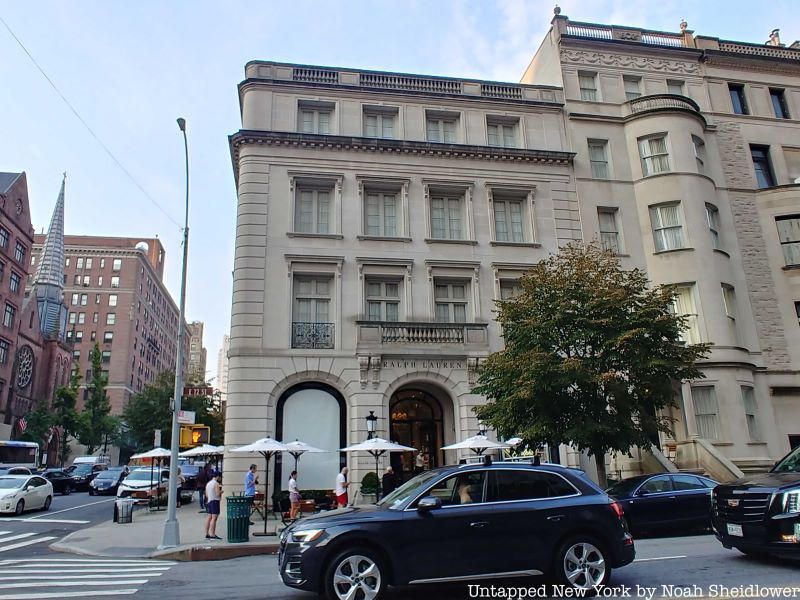
Millionaire’s Row along Fifth Avenue, consisting of dozens of Gilded Age mansions occupied by some of the wealthiest people who ever lived, was primarily concentrated around Midtown. However, a handful of Beaux-Arts mansions still remain on the Upper East Side, primarily in the East 70s. Henry Clay Frick’s mansion at 70th and Fifth is now the Frick Collection, prized for its Old Master paintings, including three Vermeers. Although Museum Mile replaced a number of Fifth Avenue mansions, the 89th Street home of sculptor Anna Hyatt Huntington previously housed the National Academy Museum and School of Fine Arts, while the Cooper-Hewitt National Museum of Design is located in one of Andrew Carnegie’s homes.
854 Fifth Avenue is Manhattan’s last intact Gilded Age Mansion, built in 1905 for stockbroker and future governor of Rhode Island R. Livingston Beeckman. At 1 East 71st Street, Florence Vanderbilt, daughter of William Henry Vanderbilt, helped design a 70-room home that matched the lavishness of her townhouse at 684 Fifth Avenue. The Ruth Brown House was completed in 1895 for its namesake, the mother of the first American racing-car champion David Bruce-Brown; but instead of moving in, she sold it to Alva Vanderbilt. 39 East 72nd Street is a seven-story townhouse on the Upper East Side where socialite Gloria Vanderbilt grew up.
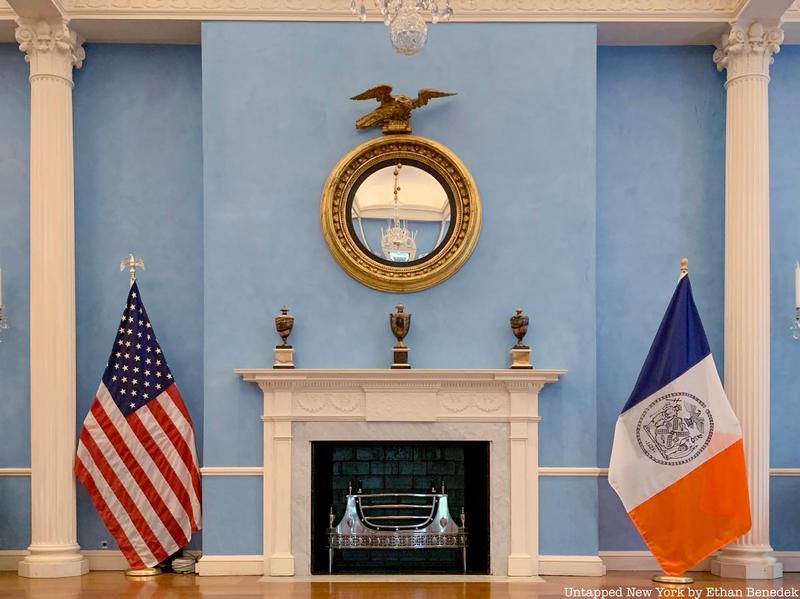
In 1804, after being shot in a duel with Aaron Burr in Weehawken, New Jersey, Alexander Hamilton was transported to the home of the Bayard family who lived in the West Village. It was in front of the fireplace that Hamilton likely died on July 12th. But in 1966, when Gracie Mansion was redeveloped, the fireplace from the Bayard home was installed in the ballroom. Still housed in New York City are the pistols that were used by Hamilton and Burr, which are part of the permanent collection of JP Morgan Chase Headquarters.
Gracie Mansion also became the mayor’s residence as a protection mechanism against Nazi attacks. Robert Moses thought it would be safer and easier to evacuate the mayor from the mansion in case of a Nazi attack; the Nazis had attempted to infiltrate Grand Central Terminal. La Guardia ended up moving in as the First New York Mayor who resided in Gracie Mansion, nicknaming it the “Little White House.”
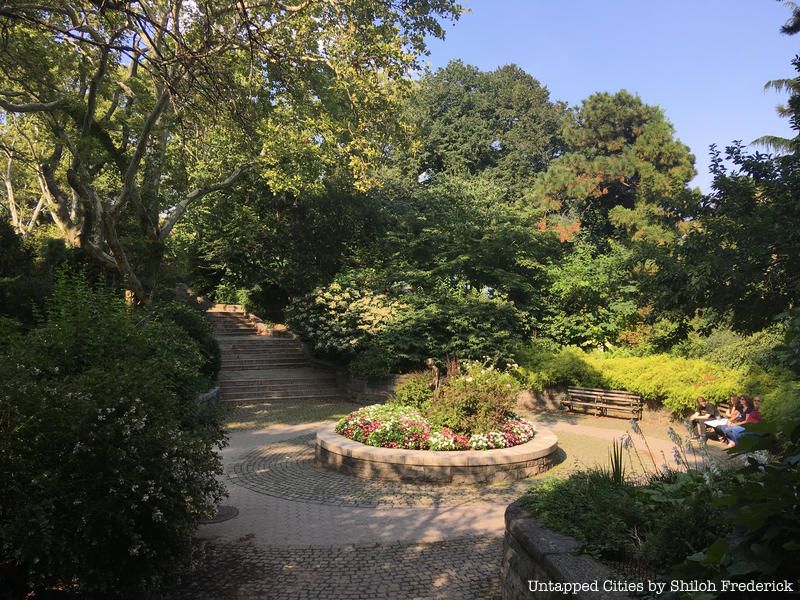
In the 19th century, many German immigrants began moving to Yorkville around 86th Street. Many German New Yorkers spent time in Carl Schurz Park, named after the German-born Secretary of the Interior. The original German immigrants moved around the 1850s to help construct the Croton Aqueduct, but immigration picked up around the 1880s. Following the General Slocum disaster in 1904, in which a ship carrying mostly Germans caught fire, many German residents of “Kleindeutschland” on the Lower East Side traveled uptown. The area was a haven for refugees from Nazi Germany, although the pro-Nazi German American Bund set up its base in Yorkville.
The area was also known for its many breweries, and there was some friendly (and not so friendly) competition between the two main ones: Ehret’s Hell Gate Brewery and Ruppert’s. A number of German and Eastern European restaurants and shops are still open in the area today, including Heidelberg Restaurant, Schaller’s Stube Sausage Bar, Cafe Sabarsky, and Bohemian Spirit Restaurant.
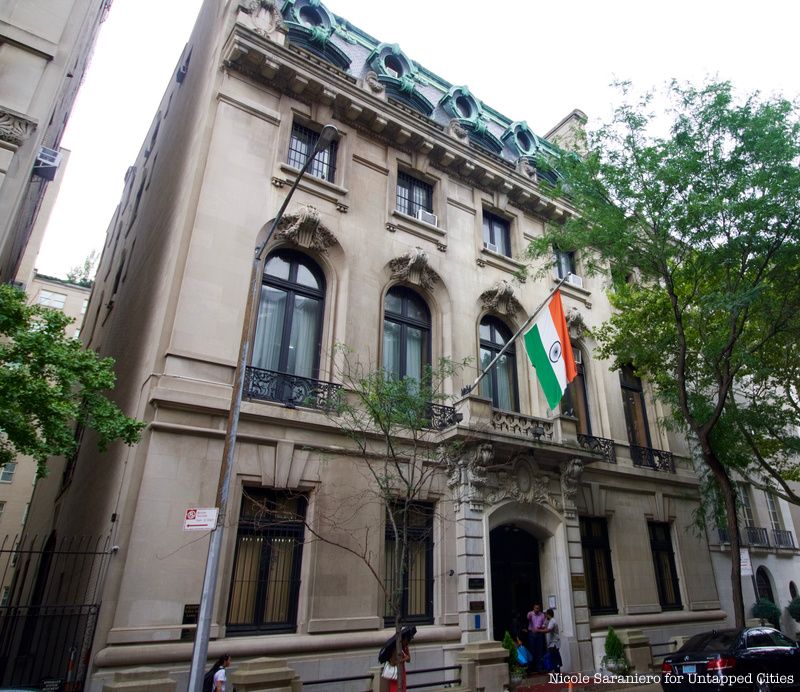
The Upper East Side houses over 20 diplomatic missions, many of which are located in former mansions. The Consulate-General of Greece in New York, for instance, is in the former 79th Street residence of George L. Rives, who served as U.S. Assistant Secretary of State. Others located in former mansions, many of which are between Fifth Avenue and Madison Avenue, include the Consulates-General of Russia, India, Indonesia, France, and Austria.
Additionally, there are about a dozen missions to the UN located in historic homes within historic districts, including the Upper East Side Historic District and the Carnegie Hill Historic District. Countries include Belarus, Mongolia, Ivory Coast, Mali, and Iraq.
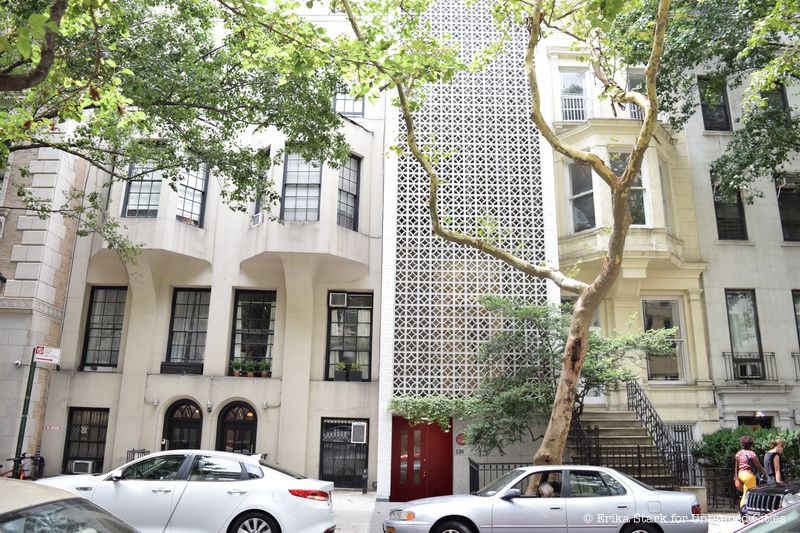
Located at 130 E. 63 Street, The Edward Durell Stone House was transformed from an 1878 brownstone into an inventive modernist building. MoMA’s architect Edward Stone added a skylight, took out interior walls, and added latticed layering that covers the front of the building. Stone retained the interior staircase, which features white spindles and mahogany railings. The ground level has a guest bedroom suite with access to a garden. The third floor is particularly noteworthy, containing two original fireplaces within the master suite and library.
A red plaque by the entrance outlines the landmark status of the home. The sign reads: “Stone later rejected the austerity of modernism and sought to create a warmer, more decorative modern architecture in projects such as the US. Embassy in New Delhi, India, the John F. Kennedy Center for the Performing Arts in Washington D.C., the Gallery of Modern Art on Columbus Circle (now the Museum of Arts and Design, following controversial renovations), the General Motors building on Fifth Avenue, and this townhouse, which he renovated in 1956, and where he lived until 1964.”
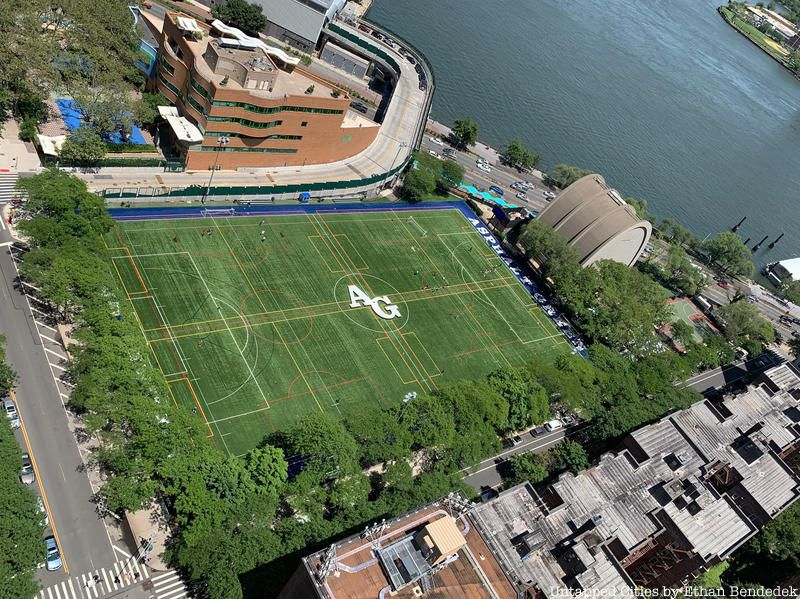
The Municipal Asphalt Plant, built between 1941 and 1944, was an old asphalt plant that became a pool and fitness center in 1984. The plant was designed by Robert Allen Jacobs and Ely Jacques Kahn, who designed many New York skyscrapers and collaborated with Ayn Rand. The plant features four arched ribs of reinforced concrete, reducing unused space. The arches also reduced the need for reinforced steel, which was incredibly expensive during World War II. Asphalt Green, the fitness center, was created four decades later following major structural changes to the interior.
The post-modernist building, though, was hated by Robert Moses, who called it the “Cathedral of Asphalt.” He further noted that it was “the most hideous waterfront structure ever inflicted on a city by a combination of architectural conceit and official bad taste.” However, The Museum of Modern Art defended it in the exhibit “Art in Progress,” stating that it was “one of the buildings in the entire country which best represent progress in design and construction during the past twelve years.”
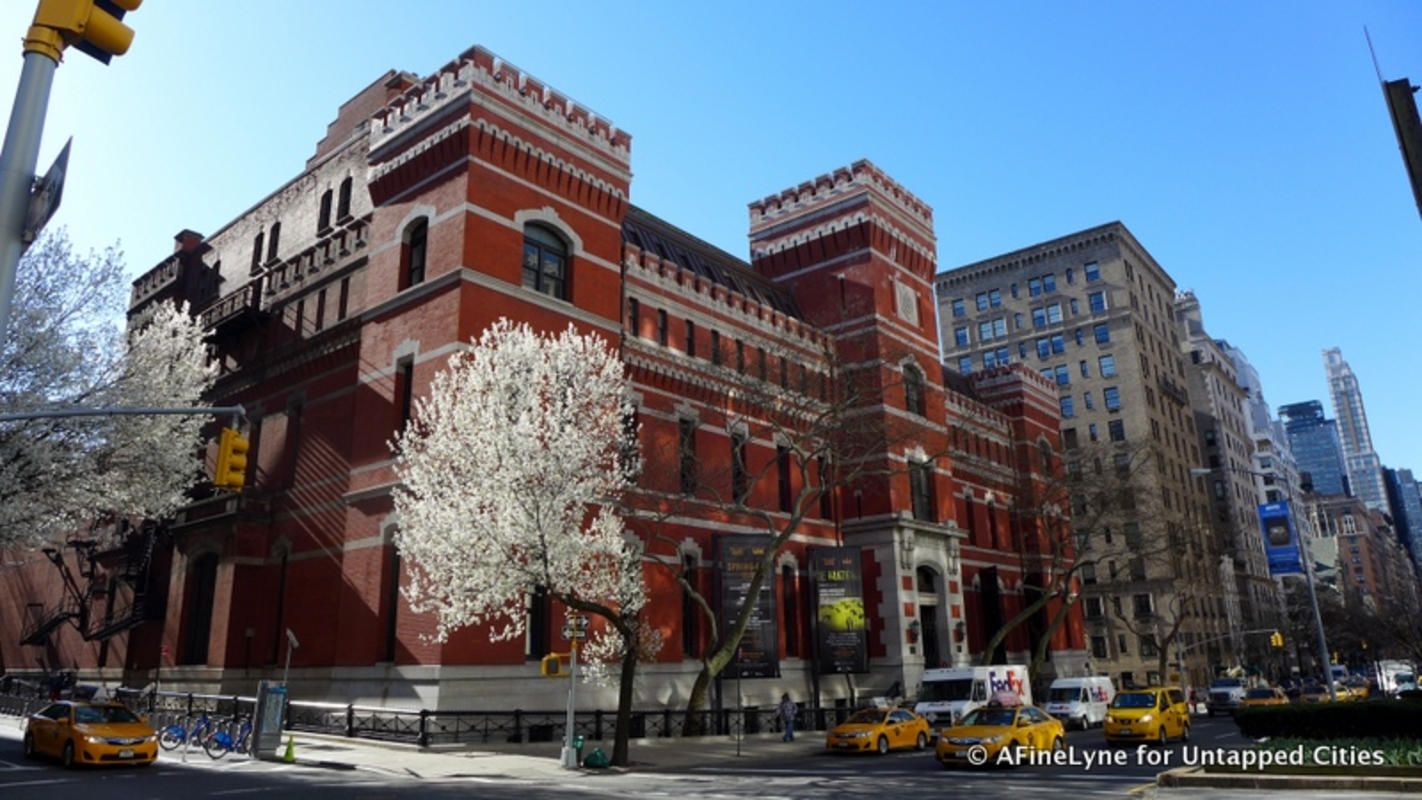
The Knickerbocker Greys is a youth cadet corps on the Upper East Side and the oldest after school activity in the U.S. The corps was founded by Mrs. Augusta Lawler Stacey Curtis, whose husband Dr. Edward Curtis assisted in the autopsy of Abraham Lincoln. The corps was started to keep her boys out of trouble, especially since there were no after school activities or sports in 1881.
The Knickerbocker Greys meet at the armory on Park Avenue, although the corps previously met at locations downtown. The Greys first accepted girls in 1986, decades after figures such as Nelson Rockefeller, Cornelius Vanderbilt III, and John Lindsay attended. The program teaches children leadership skills through marching and drill routines, as well as American history lessons.
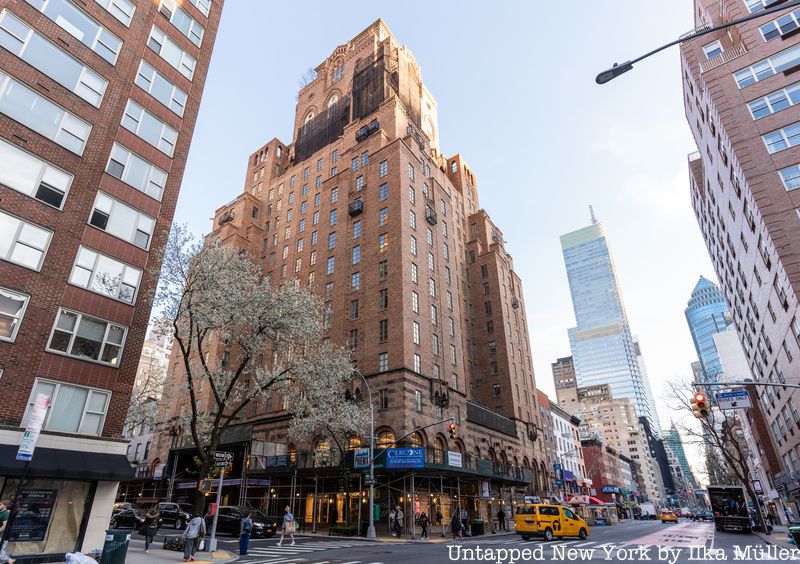
Located at 140 East 63rd Street, the Barbizon Hotel was built in 1927 as a “Club Residence for Professional Women.” The hotel is a blend of Late Gothic Revival and Italian Renaissance architecture with some Islamic elements. The hotel’s reputation skyrocketed in the 1940s as the premier hotel for young single women. It was required that a woman have three letters of recommendation and impeccable manners to be allowed to rent a room at the hotel. And it wasn’t until 1981 that male guests were allowed in.
Between 1940 and 1960, Joan Crawford, Grace Kelly, Liza Minnelli, Cybill Shepherd, Candice Bergen, Joan Didion, and Betsey Johnson made the Barbizon their home. Ricky Gervais and Boris Johnson had notable stays at the hotel as well. In 2002, following a major renovation, the name was changed to the Melrose Hotel, and since 2005 it has been known as Barbizon 63. The building now contains an indoor pool that is a part of Equinox Fitness Club.
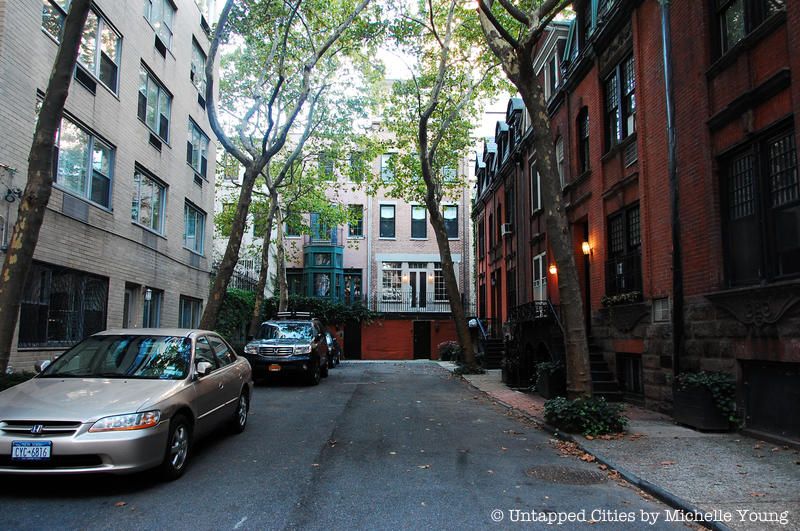
Henderson Place, located on 87th Street between East End Avenue and York Avenue, is a one-block-long Historic District. Henderson Place is a private road blocked off to traffic known for its Queen Anne-style homes that were once part of a larger development of 32 houses. The district was developed by John C. Henderson, who gained wealth from making fur hats. Henderson bought a parcel of land that had previously belonged to John Jacob Astor, and the land skyrocketed in value as a result of local construction of the New York and Harlem Railroad Company lines.
Somewhat comedically, the homes were built for “persons of moderate means,” even though the homes are now highly valued. Henderson hired the architectural firm of Lamb and Rich, who were also working on Theodore Roosevelt’s summer home of Sagamore Hill, The first residents of the homes were electricians and other blue-collar workers.
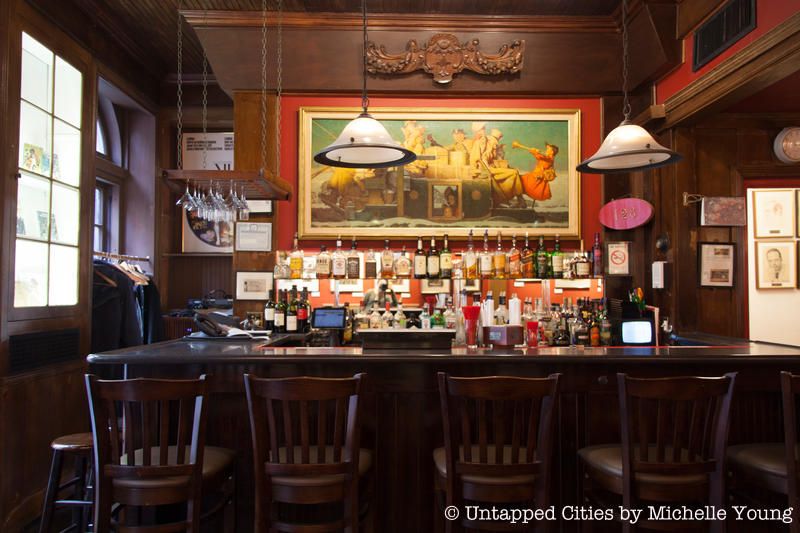
Founded on February 1st, 1901, the Society of Illustrators was founded “to promote generally the art of illustration and to hold exhibitions from time to time.” The Society was founded by nine artists, including Frank Vincent DuMond and Otto Henry Bacher. Members of the Society worked with the Committee on Public Information’s Division of Pictorial Publicity, and eight members were sent to France to photograph World War I. The Society also created dozens of posters to boost morale during World War II.
The Society, located on East 63th Street, acts as a gathering place for industry folks and fans, celebrating contemporary illustration through gallery and award shows. The Society also has a bar and dining room upstairs, complete with an original Norman Rockwell mural. The Society’s collection boasts 1,800 original works, including those of N.C. Wyeth and Maxfield Parish.
Next, check out the Top 10 Secrets of the Upper West Side!
Subscribe to our newsletter